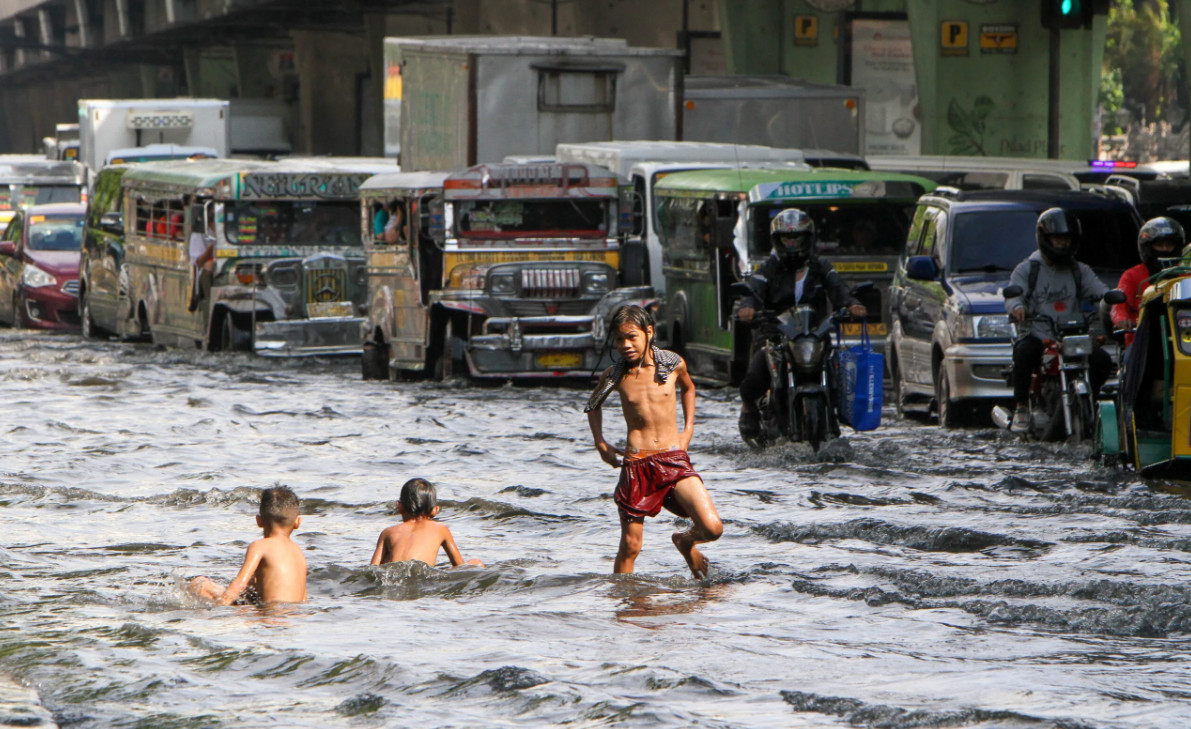The Philippines, an archipelago paradise boasting vibrant coral reefs, lush rainforests, and friendly faces, beckons travelers year-round. But with a tropical climate that swings between dry and wet seasons, picking the perfect time for your adventure is crucial. While the allure of the Philippines is undeniable, there are times when the weather might put a damper (literally) on your dream vacation. So, before you book your flights and pack your swimsuit, let’s first find out the worst time to visit the Philippines.
Worst Time to Visit the Philippines: The Dreaded Rainy Season (June to October)
The Philippines experiences a distinct rainy season from June to October. While some might romanticize the idea of lush landscapes and cascading waterfalls, the reality can be quite different. Here’s what you can expect during these months:
-
Frequent Downpours: Prepare for afternoon showers that can become heavy evening deluges. These downpours can disrupt your outdoor plans, from island hopping to exploring historical sites. Walking tours and sightseeing become less enjoyable when dodging puddles and navigating slippery streets.
-
Rough Seas and Unpredictable Waters: The rainy season might disappoint if water activities are high on your agenda. The seas become rough, making snorkeling and diving less safe and enjoyable. The strong currents and choppy waters can also cancel ferry rides and other marine transportation, potentially throwing your itinerary into disarray.
-
Typhoon Threats: The Philippines lies within the typhoon belt, and these powerful storms are most frequent between July and October. Typhoons can bring torrential rains, strong winds, and even landslides, causing significant disruptions and potential dangers. Flight cancellations, power outages, and road closures become a real possibility if a typhoon hits during your trip.

Beyond the Rain: The Downside of Peak Season (March to May)
While the rainy season might pose some challenges, the complete opposite – the dry season (November to May) – also has its drawbacks. Here’s why peak season might not be the perfect fit for everyone:
-
Crowds and Higher Prices: As the weather turns bright, so do the crowds. Popular tourist destinations can become jam-packed, especially during holidays like Christmas and Easter. Expect long lines at attractions, fully booked hotels, and potentially inflated prices for flights and accommodations.
-
Scorching Heat and Humidity: The dry season coincides with the hottest months, particularly March to May. High temperatures and humidity can be uncomfortable, especially for those unfamiliar with tropical weather. Exploring under the midday sun can be draining, and outdoor activities might be best enjoyed in the cooler mornings or evenings.
Finding the Perfect Balance
So, when is the absolute worst time to visit the Philippines? It depends on your priorities and tolerance for certain weather conditions. Here’s a quick breakdown to help you decide:
-
Absolutely Avoid: If you hate the rain and prioritize outdoor activities, avoid the Philippines between June and October, particularly the peak typhoon months (July to September).
-
Consider Alternatives: If you’re on a tight budget and don’t mind the occasional downpour, the shoulder seasons (May-June and October-November) might offer a good compromise. You’ll encounter fewer crowds and potentially lower prices, with the chance of some sunshine in between the showers.
Tailoring Your Trip to the Weather
The beauty of the Philippines is its diversity. Different regions experience slightly different weather patterns. For example, Palawan’s relatively dry season extends well into May. Researching the location you plan to visit can help you choose the ideal travel window.
Embrace the Unexpected
No matter when you visit, the Philippines can throw some curveballs weather-wise. Pack a light rain jacket even during the dry season, and be flexible with your itinerary. If you encounter rain, consider exploring cultural sites, indulging in delicious Filipino cuisine, or relaxing at a spa. Sometimes, a change of pace can lead to unexpected and memorable experiences.
The Philippines offers something unique at any time of year. By understanding the weather patterns and potential drawbacks of different seasons, you can plan your trip for maximum enjoyment and create unforgettable memories in this captivating archipelago.
Beyond the Weather: Other Considerations
While weather undoubtedly plays a crucial role in planning your Philippine adventure, other factors must be considered to ensure a smooth and enjoyable trip. Here are some additional insights:
-
Festivals and Holidays: The Philippines is a country brimming with vibrant yearly festivals and celebrations. These events offer a glimpse into Filipino culture and traditions but can also lead to heavier tourist traffic and higher accommodation prices. If experiencing a festival is high on your priority list, factor that into your travel window and book well in advance. However, if you crave peace and quiet, consider avoiding major holidays like Christmas and Holy Week.
-
Surfing Season: The Philippines boasts world-class waves for surfing enthusiasts. However, the prime surfing conditions often coincide with the rainy season (July to October) in some areas like Siargao and La Union. While the waves might be epic, you’ll need to be prepared for potential downpours and rough seas. Research specific surf spots and their peak wave seasons to align your surfing adventure with your desired weather conditions.
-
Local Events: Many regions in the Philippines hold unique local events throughout the year. These could range from harvest festivals showcasing local produce to cultural shows celebrating indigenous traditions. Researching these events beforehand can add a unique flavor to your itinerary and provide an authentic Filipino experience.
Making the Most of Your Trip
No matter when you visit, here are some tips to ensure a fantastic Philippine adventure:
-
Be Flexible: Embrace the unpredictable nature of the weather in the Philippines. Pack for all possibilities, and be willing to adjust your plans if the skies open up unexpectedly. Sometimes, the most memorable experiences come from spontaneous detours.
-
Pack Smart: Lightweight, quick-drying clothing is ideal for the hot and humid climate. A rain jacket and waterproof shoes are essential, even during the dry season. Sunscreen, a hat, and sunglasses are your best friends for those sunny days.
-
Learn a Few Tagalog Phrases: A little effort goes a long way. Learning a few basic Filipino phrases like “Magandang araw po” (Good day) and “Salamat po” (Thank you) will be appreciated by locals and enhance your cultural immersion.
-
Embrace the Filipino Spirit: Filipinos are known for their warmth, hospitality, and resilience. Embrace the “pwede na” (it will do) attitude and go with the flow. Unexpected situations can often lead to the most heartwarming interactions with locals.
The Philippines is a country that will captivate you with its natural beauty, rich culture, and friendly people. By understanding the weather patterns, considering other travel factors, and packing the right attitude, you can navigate any season and create a truly unforgettable Filipino adventure.
See Also:
- When is the Best Time to Visit the Philippines
- Tourist Guide for Shopping in Kalibo, Aklan
- 11 Beachfront Tourist Attractions North of Bacolod
- Top 13 Korean Restaurants in Bohol
- Bohol Nightlife: Top 9 Nightclubs and Bars After Dark
